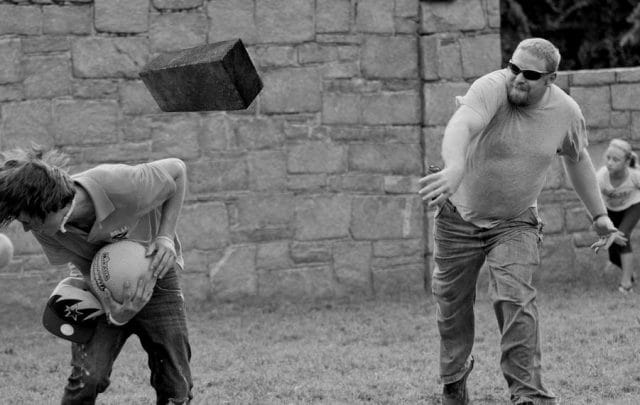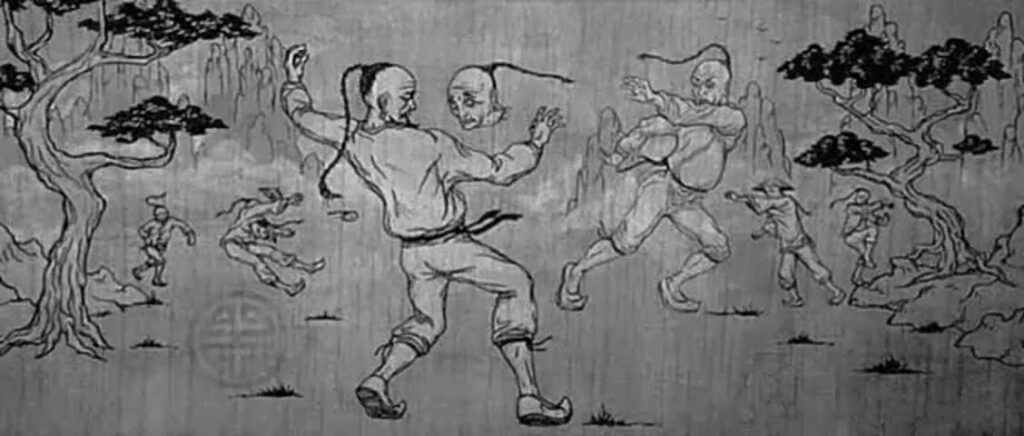The Violent Origins and History of Dodgeball: From Fatal Battle to Recreational Sport
Today, dodgeball is a popular game enjoyed in schools, gyms, and recreational leagues across the globe. It’s an action-packed, high-energy sport that promotes teamwork, agility, and rapid reflexes. Yet, the history of the game is much more sinister than most would imagine. Dodgeball wasn’t always a carefree, light-hearted pastime—it began its life as a vicious and sometimes fatal style of tribal warfare in Africa close to two centuries ago.

The Deadly African Origins of Dodgeball
African tribes were the earliest to play a version of dodgeball as a survival drill and not a sport. Rather than rubber balls, tribesmen threw big rocks, hardened clay balls, or even sharpened reeds at their victims. The purpose was not only to knock players out but also to hurt or disable them.
The game was employed by tribes as a form of training for battles, instructing young warriors on how to avoid being hit by projectiles, how to cooperate, and how to dispose of enemy fighters. When one of the players was hit by a rock, the other group would increase their attack intensity, attempting to kill him. In the meantime, teammates of the injured player would scramble to protect him from further injury while not getting hurt themselves. This violent form of the game was as much a test of physical prowess as of strategy, stamina, and allegiance.
Tribal chiefs had the belief that this extreme form of dodgeball was training their people for actual combat. It taught them the value of teamwork, having the quick reflexes, and being able to think on their feet. Yet it was also a means of determining the weakest members of the tribe—the ones who were unable to dodge and defend themselves were usually liabilities in war.

Dr. James H. Carlisle: The Missionary Who Witnessed the Game
The rough-and-tumble African form of dodgeball may have never reached the rest of the world had it not been for a British missionary named Dr. James H. Carlisle. On his travels in Africa in the early 1800s, Carlisle witnessed tribesmen playing the lethal game. He was shocked as well as captivated by its ferocity.
Carlisle marveled at how the players exhibited great agility, accuracy, and coordination. As violent as the game was, he appreciated the camaraderie among teammates—how they put their own safety at risk to shield hurt players. Fascinated, he observed the game for weeks, chronicling its rules and tactics.
When Carlisle returned to England, he tried to introduce a variant of the game to children. But soon he found that European kids did not have the physical fitness and reflexes to dodge and throw like the African tribesmen. The game was dangerous in its traditional form, so Carlisle started brainstorming about how to make it less so.
The Birth of Modern Dodgeball at St. Mary’s College
Carlisle’s chance to improve the game arrived when he took a professorship at St. Mary’s College in Norfolk, England. Set on inventing a safer game, he substituted the rocks and sharp objects with a hard leather ball—painful when hurled with force but no longer deadly.
The original form of dodgeball at St. Mary’s was being played on an open field with minimal boundaries. Individuals had to move tactically, nearly as if in a chess game, to outmaneuver the other team. The game was straightforward:
A player was “out” if they were hit several times consecutively.If the player could not dodge the ball, they could try to deflect it with their hands to minimize its effect.Teamwork was essential, with players needing to cover teammates while attempting to take out opponents.
For almost one hundred years, dodgeball was a specialty sport mostly competed in British schools with minimal changes to its rules.
Philip Ferguson and the American Revolution of Dodgeball
The popularity of the game boomed in 1884 when St. Mary’s College welcomed a team of visiting students from Yale University, including young athlete Philip Ferguson. Intrigued by the game, Ferguson envisioned ways of making it more organized and competitive.
On his return to the United States, Ferguson made some fundamental changes that developed dodgeball into the sport we know today:
Fixed Playing Area: In contrast to the open-field iteration, Ferguson’s regulations necessitated an official court with two ends. There was no rolling up as the ball had to bounce.
One-Hit Elimination: Rather than having hits, a player was out once they were hit by a ball.
Catch Rule: When a player caught a thrown ball, the thrower was out, and a teammate already out could return to the game.
Ferguson’s take speeded up dodgeball, made it more energetic, and made it safer to play by school children. The first official rulebook came out in 1905, and the game rapidly spread throughout American schools.
Dodgeball’s International Popularization and the 2004 Movie Phenomenon
During the 20th century, dodgeball had become a standard in school physical education classes around the globe. It wasn’t until the 2004 comedy movie DodgeBall: A True Underdog Story was released that the sport received huge mainstream recognition. The film, which featured Ben Stiller and Vince Vaughn, gave the game a comedic and entertainment twist, attracting a new generation of players.
Dodgeball is today played in several forms, ranging from beginner foam-ball leagues to competitive rubber-ball competitions. St. Mary’s College in Norfolk, though, is the sole location where the original, historic form of the game is still celebrated. The college hosts a special game every four years using Carlisle’s early rules, in honor of both the African tribesmen who originally devised the game and the missionaries who developed it into the sport that we know today.
Conclusion: From Survival to Sport
The transformation of dodgeball from a deadly tribal ritual to an international recreational sport is a tribute to human creativity. What was once a violent test of strength and endurance is now a popular game that instills teamwork, strategy, and perseverance. Though contemporary dodgeball is distant from its murderous past, its history reminds us of how sports can evolve, endure, and flourish over centuries and cultures.




